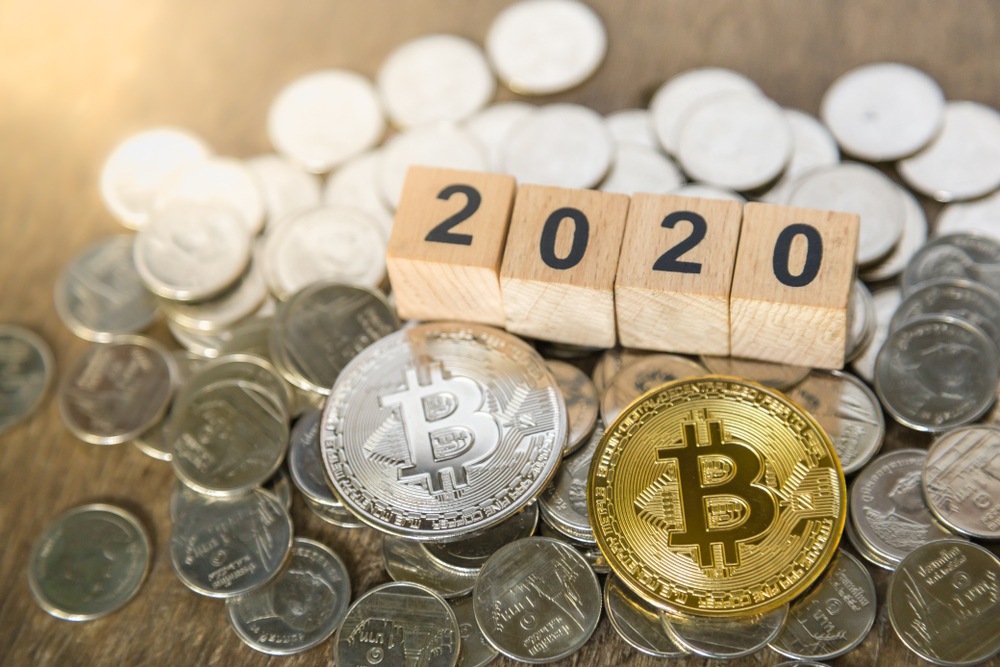All The Time Crypto Won And Lost Since 2020 Began

It is hard to imagine that we are not even halfway done with 2020, considering the influx of developments and rollercoaster moments that we have had to endure. Funny enough, this sentiment is not peculiar to the crypto industry. Every sector has had its fair share of drama in 2020. However, in this article, I will fixate on the highs and lows of the crypto industry from the beginning of 2020 till date.
What Are Those Times That Crypto Faltered In 2020?

I was one of the many crypto experts that gave their two cents on the prospect of cryptocurrency. In an article published a few days to the end of 2019, I raised some valid points regarding the developments that would mold the crypto space. In between me accepting that the bitcoin ETF had lost its grip on the crypto community and predicting a spike in regulatory concerns for digital assets, I did mention that 2020 would provide numerous talking points. However, no one would have thought that a health crisis will lead to these narratives, let alone anticipated an unprecedented economic downturn in the first quarter of 2020.
Without any doubt, COVID-19 has pushed new narratives and exposed the frailties of the traditional financial system. While this is true in all ramifications, the crypto industry is not left out of the long list of markets reeling from the effects of the coronavirus pandemic. At first, it was bitcoin’s digital gold moniker that came under attack, then the spotlight was on the risks that extreme volatility poses on the emerging DeFi market. Below is an extensive look at the failings of the crypto space in 2020.
Is Bitcoin Truly A Safe Haven?

Barely two months after bitcoin’s safe haven capacity had come under scrutiny and proved doubters wrong, the sudden rise in the correlation between the price performance of bitcoin and the stock market inspired new arguments threatening to strip bitcoin of its digital gold moniker. Due to the unprecedented demand for liquid cash, assets that you would normally have banked on in a time of economic crisis tanked. One such asset is bitcoin. Bitcoin losing over 50% of its value in mid-March surprised even the most avid supporters of the digital asset.
If we are to judge bitcoin’s safe haven narrative by its response to the initial crash, it is clear that the digital gold sentiment has begun to hold sway over investors. As aptly explained by Kevin Kelly of Delphi Digital, bitcoin’s response to March’s sell-off was way more important than the fact that it originally crashed in the face of a global economic meltdown. Kelly noted:

Kevin Kelly of Delphi Digital
“In our view, Bitcoin’s performance following the aftermath is far more important than its sell-off going in, given the backdrop has never been more conducive for a non-sovereign, censorship-resistant, provably scarce digital asset. Historical precedent is quite limited given Bitcoin’s relatively short lifespan, but it is notable that prior BTC cycles have tended to peak with major central bank balance sheet growth,”
While reiterating Kelly’s argument, the managing director of eToro, Guy Hirsch, acknowledged that bitcoin’s long-term response to the global economic crisis will force investors to see the advantage of decentralized money. He explained:
“Bitcoin did perform better than the S&P 500, down 10.45% in Q1 vs. the S&P 500 which was down -19.92% at the same time period. We think that Bitcoin’s high volatility might explain some of these price movements in the short term but over the course of the next few years believe that the fact it is decentralized sound money will reveal itself to many new potential investors, and they will diversify their portfolio to include Bitcoin as a hedge against government failure.”
Crypto Exchanges Stumble Under Pressure
There were instances where some crypto exchanges had come under a barrage of criticism as a result of trade shutdowns and system failures attributed to market volatility. Some question the viability of crypto exchange infrastructures, while others blatantly accused exchange platforms of intentionally halting trades to protect their businesses from the high demand for liquidation. Consequently, the concept of circuit breakers and their function in traditional markets have begun to take center stage in the crypto space.
DeFi Is A Long Way from Full Decentralization

At the beginning of the year, many predicted that the emerging DeFi market was the next poster boy for the crypto industry. Honestly, there is every reason to support this notion, considering how the technology has managed to reinvent traditional financial processes and allow average individuals to have more control over their finances. DeFi was Ethereum’s latest move at proving itself as an important piece in the future of the crypto economy.
Nevertheless, the DeFi movement recorded its major setback as a result of the recent market crash. The sector, which was worth over $1 billion at the beginning of the year, had spiraled to a quarterly close of $552 million. More interesting is the actions of the MakerDao Foundation to cushion the effects of the price downturn of ETH, which serves as the collateral for its decentralized stablecoin. In response, people are coming to terms with the fact that decentralization is not the strongest suite of existing DeFi technology. Some have even gone as far as to compare MakerDao’s tinkering of monetary policies of the ecosystem to the actions of the US Federal Reserve to the liquidity crisis in America.
Stablecoin Under Regulatory Scrutiny
Perhaps, the most threatening development in 2020 came in the form of a recommendation from the Financial Stability Board (FSB) to central banks on increased regulatory oversight on the generation and issuance of stablecoins. Since its introduction to the crypto market, stablecoins have added new support for the crypto mainstream movement. The concept provides stability amid extreme price uncertainties of cryptocurrencies. It also improves the liquidity of the crypto market, which highlights maturity. Therefore, FSB’s recommendations may strip the crypto market of its current structure and reduce the efficacy of crypto as the bedrock for financial services as seen in DeFi-based products.
A portion of the document reads:
“The activities associated with global stablecoins (GSCs) and the risks they may pose can span across banking, payments, and securities/investment regulatory regimes both within jurisdictions and across borders. These potential risks may change over time, and so challenge the effectiveness of existing regulatory, supervisory and oversight approaches. GSCs also introduce specific vulnerabilities. For example, depending on the facts and circumstances, the decentralized nature of GSC arrangements could pose governance challenges; stabilization mechanisms and redemption arrangements could pose market, liquidity, and credit risks; and, the infrastructure and technology used for recording transactions, and accessing, transferring and exchanging coins could pose operational and cyber-security risks.”
What Are the Crypto Industry’s Wins of 2020?

Regardless of the disappointing state of the global economy, the crypto industry has recorded several wins that have shown that there is life after the coronavirus pandemic. Some of these milestones include:
Crypto Regulation Is Building Steam
In my projections for 2020, I forecasted that regulators will put more effort into regulating the crypto industry. As expected, crypto regulation took an exciting twist when the European Union expanded its Anti-money laundering laws to include crypto custodians. On the 10th of January, the 5th Anti-Money Laundering Directive 5AMLD came into effect. This law explains that a cryptocurrency is “a digital representation of value that is not issued or guaranteed by a central bank or a public authority, is not necessarily attached to a legally established currency and does not possess a legal status of currency or money, but is accepted by natural or legal persons as a means of exchange and which can be transferred, stored and traded electronically.”
Next, the Canadian Securities Administrators released guidance that governs how crypto exchanges can determine when transactions fall under the country’s securities laws. Experts believe that the latest interpretation of existing laws will greatly affect exchanges that offer crypto custody services. Furthermore, one of the biggest wins in the crypto space came in March when a supreme court in India overturned a ban imposed on crypto-related transactions. While explaining its decision, the court argued that “many of the developed and developing economies of the world […] have scanned cryptocurrencies but found nothing pernicious about them and even the attempt of the Government of India to bring legislation banning cryptocurrencies, is yet to reach its logical end.”
Even though some still believe that the influx of crypto regulations could dilute the essence of crypto itself, it is, however, necessary to have frameworks establishing standards in the industry. The faster regulators reach a global stance on crypto regulation, the easier it is for crypto firms to manage their businesses on a global scale.
Crypto Outshines Fiat
The prevailing context that puts crypto above traditional financial systems revolves around its detachment from the overly centralized systems governing the banking sector. People are coming to terms with this reality, and it is evident in the surge in the interest in crypto as reported in a joint survey by Crypto.com and The Economist. The survey showed that crypto awareness in developing economies had reached 92% and 72% in developed countries.
I believe that this has something to do with millennial investors watching traditional market collapse twice in the last ten years. Andrew Rossow explains this better when he wrote:

Andrew Rossow
“Bitcoin’s safe-haven narrative may have taken a hit during the last month, but this is precisely the moment it was created for. Add in a rising generation of Millennial investors who have now watched the legacy system fail spectacularly twice, and the picture of a stark opportunity for crypto to prevail among the public begins to crystalize.”
Rossow went further to paint the situation at hand and how it might spur the average investor or business owner to seek a more reliable financial system. Rossow stated:
”We may be witnessing a fundamental shift in legacy market sentiment — specifically, the cozy relationship between the government and corporations. The stimulus package revealed that corporations were woefully unprepared for any type of supply/demand shock and had abused low-interest loan rates to buy back their own shares. Nonetheless, most corporations are being bailed out along with major fund managers to the tune of the Fed and Treasury Department’s $4.25 trillion standing lending facility. In comparison, small businesses are left with a meager $300 billion trough.”
Surprisingly, digital assets are proving themselves as viable alternatives to traditional money. This assertion stems from the fact that banks in the US are subjecting their customers to withdrawal limits amid the growing demand for cash. In contrast, stablecoins are experiencing unprecedented supply and demand.
Rossow added:
“The larger context of wielding crypto payments for redundancies can apply to financial hedges, censorship-resistance and access to liquidity when the banking system is in flux. Stablecoins like Tether (USDT) may seem, ironically, a better alternative to storing U.S. dollars in a bank account, as Bank of America recently instituted withdrawal limits and is reportedly hassling clients to not tap into their full credit lines. Meanwhile, stablecoin supplies are swelling to historic levels.”
Crypto Scams on The Low

Chainalysis released a report revealing that crypto scammers are also at the receiving end of the COVID-19 pandemic. According to the research, the profits made from illicit crypto activities plummeted from $800,000 in January to $300,000 at the start of April. Chainalysis explained:
“We believe scammers are still receiving those same payments from roughly the same number of victims per month. The payments are just worth less now due to cryptocurrency price drops. In short, while COVID-19 is providing phishing and blackmail scammers with new fraudulent stories to entice victims, the cryptocurrency price drops spurred by the pandemic have drastically reduced the revenue of the Ponzi schemes and investment scams that make up most cryptocurrency scamming activity.”
Even though the recovery of the crypto market will rub off on the value of the revenue made from crypto scams, nonetheless, it does not mean that we shouldn’t celebrate the temporal shrink of one of crypto’s most potent nemesis.
Final Thought
After exploring the ups and downs of the crypto industry in 2020, I concluded that the sector is poised to capitalize on the collapse of traditional financial systems. Therefore, I can’t wait to see what the remainder of the year has in stock for us.
